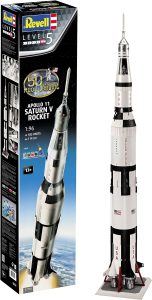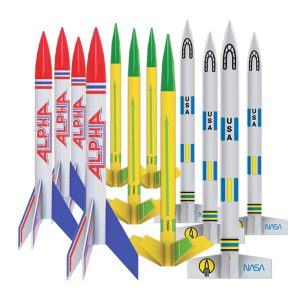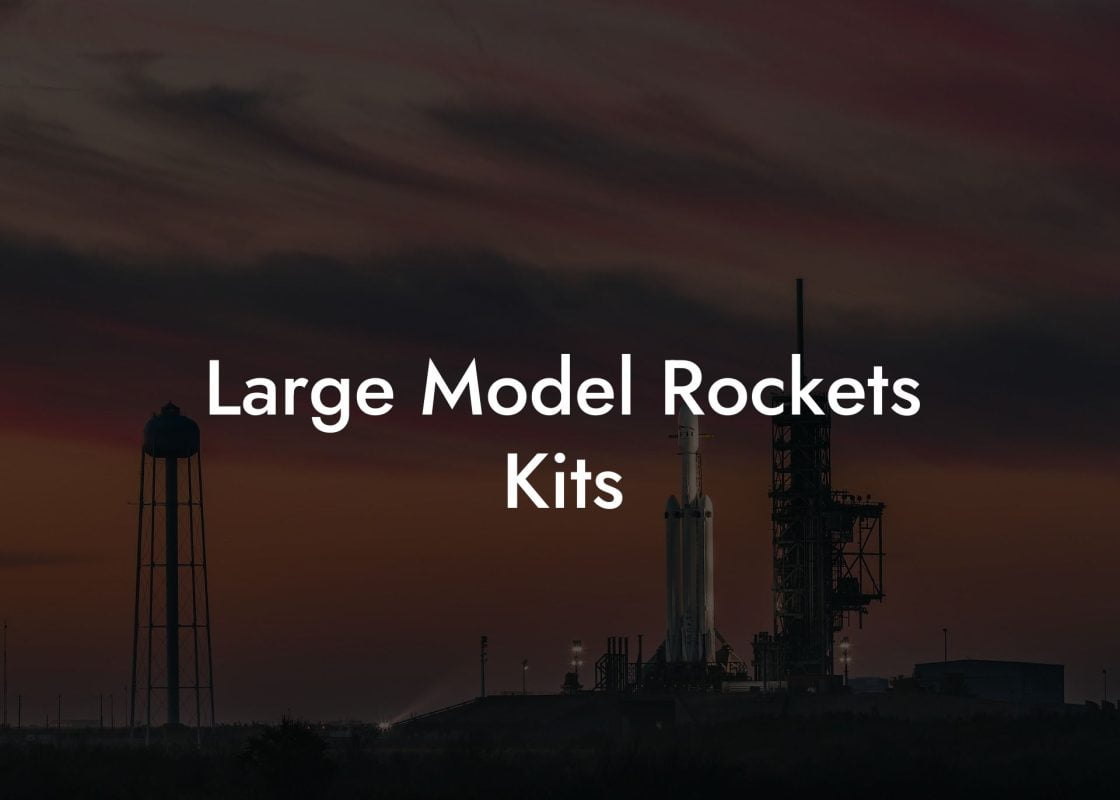Imagine crafting a precision-crafted aerospike nozzle that propels your model rocket to new heights, defying gravity and pushing the boundaries of innovation. Welcome to the world of model rocketry, where creativity meets engineering and the thrill of exploration awaits.
Quick Links to Useful Sections
What Is An Aerospike Nozzle, And Why Does It Matter?
An aerospike nozzle is a type of rocket nozzle that uses a unique, spike-like design to improve efficiency and performance. Unlike traditional bell-shaped nozzles, aerospike nozzles can adapt to changing atmospheric conditions, making them ideal for model rockets that need to navigate varying altitudes and air pressures.
By incorporating an aerospike nozzle into your model rocket design, you can achieve greater thrust, improved stability, and increased overall performance. This cutting-edge technology is not only fascinating but also opens up new possibilities for model rocket enthusiasts.
The Science Behind Aerospike Nozzles
To understand how aerospike nozzles work, let's dive into the principles of rocket propulsion. When hot gases are expelled through a nozzle, they accelerate, generating thrust. In traditional nozzles, the expansion of gases is limited by the nozzle's shape, resulting in energy loss and reduced efficiency.
Aerospike nozzles, on the other hand, use a spike-like design to create a longer, more efficient expansion path for the gases. This allows the gases to expand more freely, resulting in higher exhaust velocities and increased thrust. The adaptive nature of aerospike nozzles also enables them to optimize performance across a range of altitudes and air pressures.
Looking For The Best Model Rocket Kits? You'll Love These:
Designing And Building Your Aerospike Nozzle
Crafting an aerospike nozzle requires precision, patience, and attention to detail. Here's a step-by-step guide to help you get started:
- Choose Your Materials: Select materials that can withstand high temperatures and pressures, such as aluminum, copper, or stainless steel.
- Design Your Nozzle: Use computer-aided design (CAD) software or drawing tools to create a precise design for your aerospike nozzle. Consider factors like nozzle diameter, spike length, and throat diameter.
- Machine Your Nozzle: Use CNC machining, 3D printing, or manual machining techniques to bring your design to life.
- Assemble And Test: Carefully assemble your aerospike nozzle and integrate it with your model rocket. Conduct thorough tests to ensure optimal performance and safety.
Remember to follow proper safety protocols and guidelines when working with model rockets and aerospike nozzles.
Tips And Tricks For Optimizing Aerospike Nozzle Performance
To get the most out of your aerospike nozzle, consider these expert tips and tricks:
- Optimize Spike Length: Experiment with different spike lengths to find the perfect balance between performance and stability.
- Adjust Nozzle Angle: Fine-tune the angle of your aerospike nozzle to optimize thrust and efficiency.
- Use advanced Materials: Explore the use of advanced materials like carbon fiber or titanium to further improve nozzle performance.
- Monitor And Analyze Performance: Use data logging and analysis tools to track your model rocket's performance and identify areas for improvement.
By continuously refining and optimizing your aerospike nozzle design, you can push the boundaries of model rocketry and achieve unprecedented heights.
Resources And community Support: Your Next Steps
Join the thriving community of model rocket enthusiasts and tap into a wealth of resources, including:
- Online Forums: Participate in online forums and discussion groups dedicated to model rocketry and aerospike nozzles.
- Tutorials And Guides: Explore in-depth tutorials, guides, and videos on aerospike nozzle design and construction.
- Local Clubs And Meetups: Connect with local model rocketry clubs and attend meetups to share knowledge and learn from others.
- Professional Guidance: Consult with experienced engineers, designers, and model rocketry experts to gain valuable insights and advice.
By embracing the collective knowledge and expertise of the model rocketry community, you'll be well on your way to creating a truly exceptional aerospike nozzle that propels your model rocket to new heights.
Frequently Asked Questions: Aerospike Nozzles 101
Got questions about aerospike nozzles? We've got answers:
1. What are the advantages of aerospike nozzles over traditional bell-shaped nozzles?
Aerospike nozzles offer improved efficiency, adaptability, and performance, making them ideal for model rockets that need to navigate varying altitudes and air pressures.
2. How do I determine the optimal spike length for my aerospike nozzle?
Experiment with different spike lengths and analyze performance data to find the perfect balance between performance and stability.
3. Can I use aerospike nozzles with different types of model rockets?
Yes, aerospike nozzles can be adapted for use with various model rocket designs, including water rockets, compressed air rockets, and hybrid rockets.
4. Are aerospike nozzles more difficult to design and build than traditional nozzles?
While aerospike nozzles require more precision and attention to detail, the rewards are well worth the extra effort. With patience and practice, you can master the art of aerospike nozzle design and construction.
Looking For The Best Model Rocket Kits? You'll Love These:
Useful Interruption: Dive deeper into the world of Model Rockets with our most popular sections. If there is anything you think is missing or anything you would love for us to write about, just give us a shout.
- Getting Started & Basics With Model Rockets
- Model Rocket Design, Build & Customization
- Model Rocket Propulsion & Engine Technology
- Model Rocket Launch Techniques & Recovery
- Model Rocket Advanced Rocketry & Innovations
- Model Rocket DIY and Customization
- Model Rocket Equipment Reviews & Digital Tools
- Community, Competitions & Education
- Model Rocket Troubleshooting & FAQs
- Model Rocket Bonus/Seasonal & Niche Topics
A group of model rocket enthusiasts gathered at a field for their weekly launch event. Among them was Dave, a seasoned builder known for pushing the limits of hobby rocketry. This time, he had outdone himself.
“Ladies and gentlemen,” Dave announced, dramatically pulling a cloth off his latest creation, “I present to you: The Kraken!”
The crowd gasped. This wasn’t just a model rocket, it was a monster. The thing stood 8 feet tall, had six clustered engines, and was covered in enough duct tape to qualify as a classified aerospace project.
“Dave,” muttered Steve, the cautious safety officer, “Have you, uh… done the math on this?”
“Math?” Dave scoffed. “I built it in my garage at 3 a.m. with parts from eBay. This is an art piece, Steve.”
The countdown began.
5…
4…
3…
2…
1…
The engines ignited with a BOOM, and The Kraken shot up… kind of. It immediately did a violent barrel roll, narrowly missing the spectators before skyrocketing at an angle that could only be described as “legally questionable.”
The crowd collectively ducked as The Kraken flew straight over the adjacent cornfield, where Old Man Jenkins, the grumpiest farmer in town, was minding his business.
KABOOM!
The rocket disappeared behind the barn. A moment later, a flaming piece of Estes igniter wire landed at Steve’s feet. The silence was deafening.
And then, an unmistakable sound echoed across the field.
Jenkins’ shotgun being cocked.
“DAVE!!!” Steve shouted. “RUN.”
And that was the day Dave invented the first-ever biologically powered rocket booster: pure adrenaline.
To this day, nobody knows where The Kraken landed, but legend has it, it still haunts the skies, terrifying unsuspecting drones and low-flying birds.















